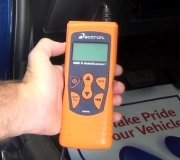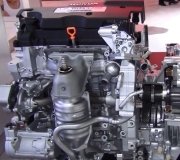The MAP sensor determines load on the engine by measuring manifold vacuum. Chrysler is the only manufacturer that has been able to make an engine run well with just that one sensor. Everyone else has needed a Mass Air Flow sensor. Every time you start the engine, the engine computer uses the MAP reading, (just before cranking starts), to determine barometric pressure, then builds a fuel metering strategy around it. As you go up the mountains, barometric pressure changes. Fuel delivery needs to be modified to match the lower air pressure, but the only thing the engine sees is a constantly rich exhaust. Based on the oxygen sensor readings, the computer can adjust fuel metering plus or minus only about 10 percent around the initial barometric pressure reading. With lower barometric pressure, less air goes into the engine. The computer removes fuel to maintain the proper mixture for lowest emissions. Lower fuel and air delivery means lower power.
For some car models, there are different MAP sensors available for vehicles that spend most of their lives high up in the mountains. For the rest of us, relatively poor performance under one extreme condition is a tiny price to pay for an engine that performs really well under all normal conditions.
All you need to do is turn the engine off, wait a few seconds, then restart it. The computer will take a new barometric pressure reading and set fuel metering around the new value. Many older GM cars used MAP sensors as a backup system to the trouble-prone MAF sensors. When the MAP wasn't needed for measuring engine load, it was constantly measuring barometric pressure while you were driving.
It also used to be real common for the "Check Engine" light to turn on in GM cars when you went up the mountains and when you came back down because the required fuel mixture was outside the range the computer was able to achieve. In those models, too, you just needed to restart the engine to update the barometric pressure reading.
Caradiodoc
SPONSORED LINKS
Friday, June 12th, 2009 AT 1:25 AM




